Last updated on
Discover the effective steps to unblock your outside kitchen drain and keep it flowing smoothly with this comprehensive guide.
Have you ever experienced a clogged drain outside your kitchen? It can be frustrating to see water pooling around your feet while doing dishes or cooking. Not only is it an unpleasant sight, but it can also lead to foul smells and even damage to your property.
But don’t worry, unblocking a drain outside your kitchen is easier than you might think. In this article, we’ll explore some simple yet effective methods that will help you unclog that stubborn drain in no time.
So let’s get started!
What's Inside
How to Identify a Blocked Outside Drain
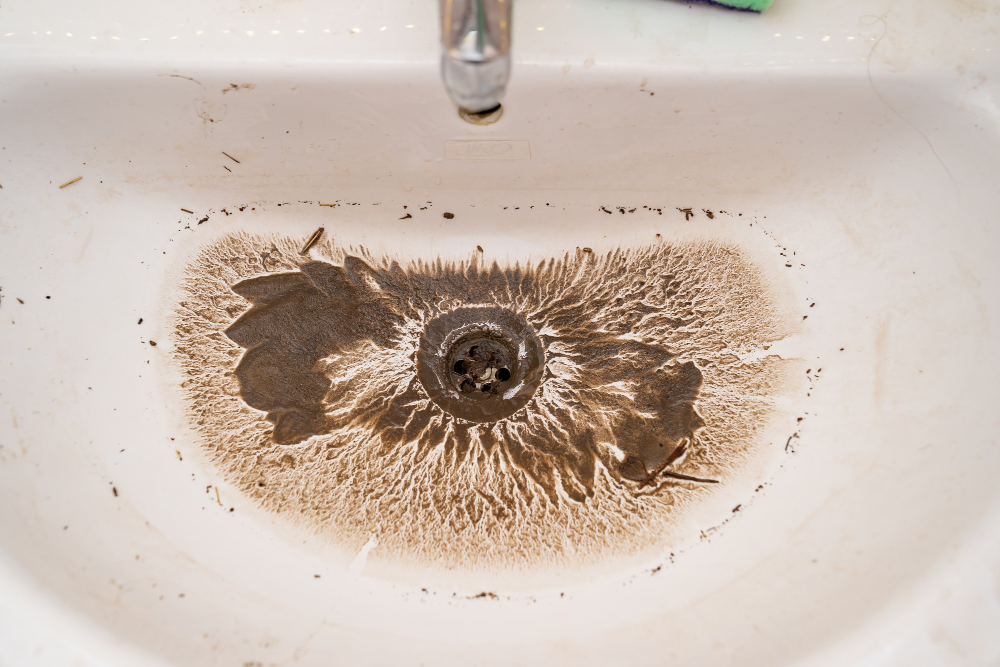
The first step in unblocking an outside kitchen drain is to identify whether it’s actually blocked or not. Sometimes, the water may be slow to drain due to a minor blockage that can easily be cleared with some simple cleaning methods.
However, if you notice that the water isn’t draining at all or is taking too long to do so, then there might be a more severe blockage issue.
One way of identifying a blocked outside drain is by checking for standing water around your property after rainfall. If you see pools of stagnant water near your kitchen area and other parts of your yard where drainage should occur naturally, then this could indicate an obstruction in the drainage system.
Another sign of a clogged outside kitchen drain is when wastewater backs up into sinks and toilets inside your home whenever you use them. This happens because the wastewater has nowhere else to go but back up through pipes leading from these fixtures since they are connected directly with outdoor drains.
Causes of Blocked Outside Drains
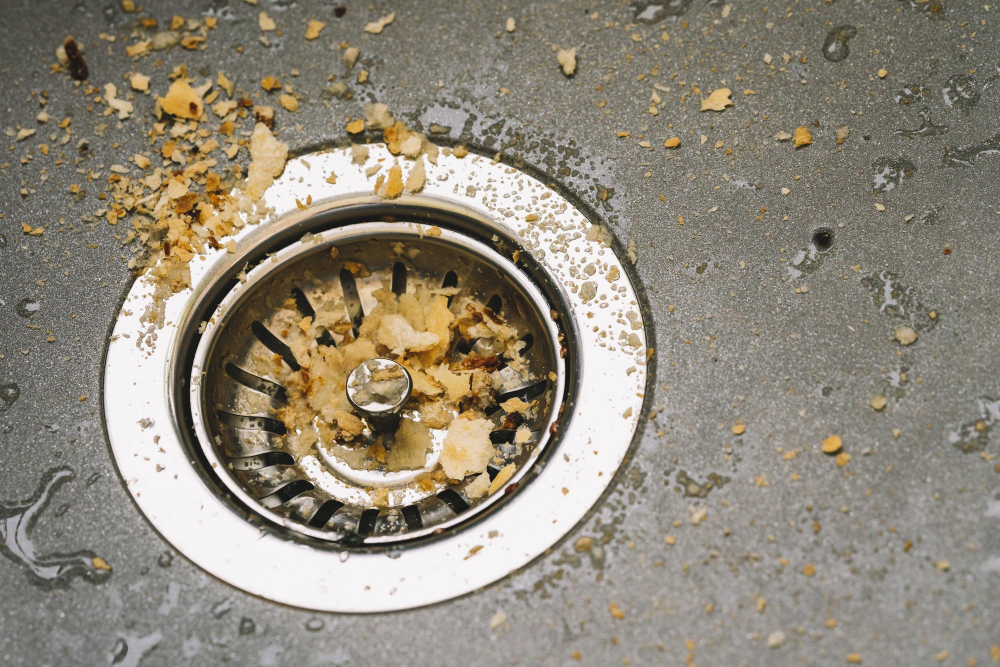
There are several reasons why your outside drain may become clogged. One of the most common culprits is food waste and grease that gets washed down from your kitchen sink.
Over time, this can accumulate and cause a blockage.
Another reason for blocked drains could be leaves, twigs or other debris that get blown into your drainage system during windy weather conditions. These materials can build up over time and create a barrier that prevents water from flowing freely through the pipes.
In some cases, tree roots may grow towards underground pipes seeking moisture which eventually leads to cracks in them causing blockages as well as damage to plumbing systems.
It’s also worth noting that poorly installed or damaged pipework can lead to frequent blockages too.
Preparing to Unblock Outside Kitchen Drain
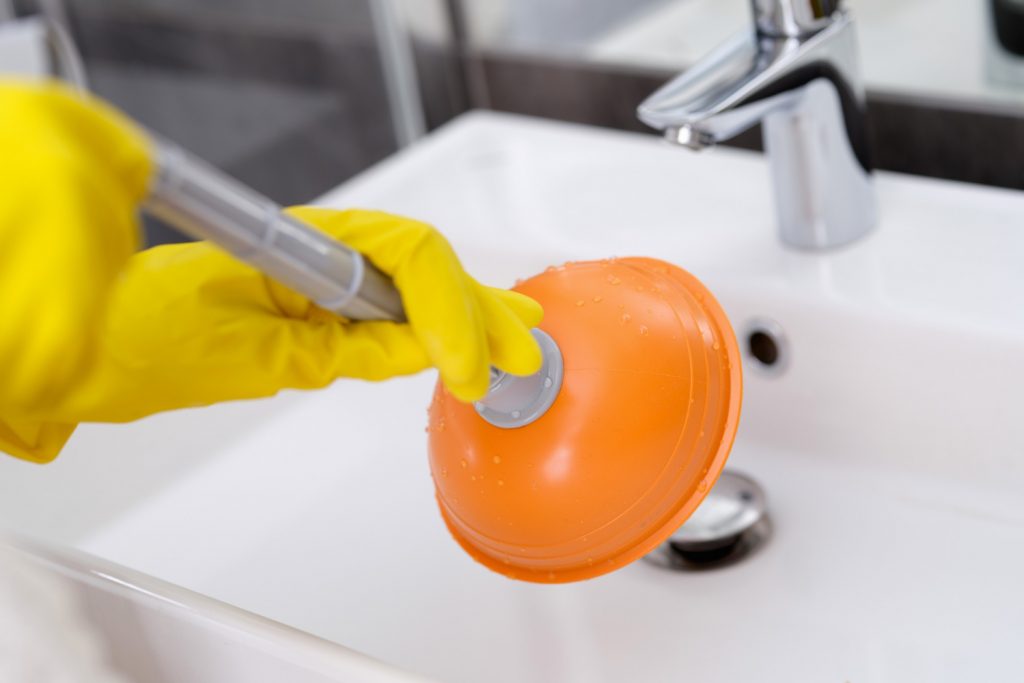
First, gather all necessary tools such as gloves, a plunger, a plumber’s snake or auger (if available), and any other equipment that may be required for your specific situation. It is also essential to wear protective gear like rubber gloves and safety goggles to avoid contact with harmful chemicals or debris.
Next, remove any standing water from around the drain using a bucket or scoop. This will make it easier for you to access the blockage without getting wet.
Locate and remove the outside drain cover carefully using a screwdriver if necessary. Be sure not to damage it in case you need to replace it later on.
Gather Necessary Tools

Having the right equipment will make the process easier and more efficient. Here are some of the tools you’ll need:
1. Rubber gloves: You don’t want to come into contact with any debris or bacteria that may be present in your drain.
2. Bucket: A bucket will help collect any water or debris that comes out of your drain during cleaning.
3. Plunger: A plunger is a useful tool for dislodging blockages from drains.
4. Drain rods: These flexible rods can reach deep into pipes and clear stubborn blockages effectively.
5. Drain cleaning chemicals (optional): If other methods fail, chemical cleaners can dissolve clogs quickly but should be used with caution as they may damage pipes over time.
Wear Protective Gear

This will help prevent any injuries or infections that may occur during the process. Protective gear includes gloves, goggles, and a face mask.
Gloves are necessary to protect your hands from sharp objects or debris that may be in the drain. Goggles will shield your eyes from splashes of water and chemicals used in cleaning the drain while a face mask is crucial for protecting yourself against harmful fumes.
It’s important to note that some chemical cleaners can cause skin irritation or respiratory problems if they come into contact with bare skin or are inhaled without proper protection. Therefore, wearing protective gear is not only recommended but also necessary for safety reasons.
Removing the Outside Drain Cover

This will give you access to the inside of the pipe and allow you to clear any debris or blockages that may be causing water backup.
To remove an outside drain cover, start by locating it. In most cases, it will be located near your kitchen sink or dishwasher outlet.
Once found, use a screwdriver or pliers (depending on how it’s attached) to unscrew and lift off the cover.
Be careful when removing a heavy metal grate as they can be sharp around their edges and cause injury if not handled properly. If necessary wear gloves for added protection while handling them.
Remove Debris From Drain
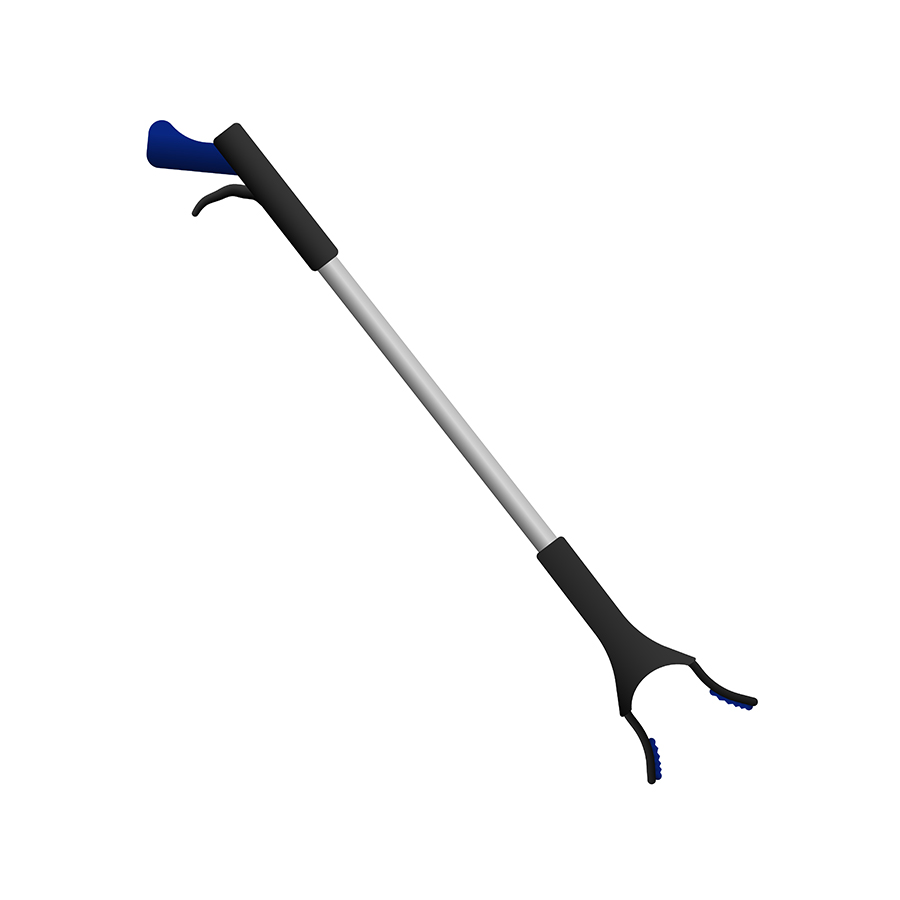
You can use a pair of gloves or tongs to pull out any visible objects such as leaves, twigs, and food particles. Be careful not to push them further down into the drain.
If there is standing water in your sink or outside kitchen area, try using a bucket or container to scoop out as much water as possible before proceeding with removing debris from the drain.
It’s important not to force anything down into the drain while trying to remove debris. This could cause more damage and make it harder for you later on when trying other methods of unblocking your outside kitchen drains.
Use a Plunger
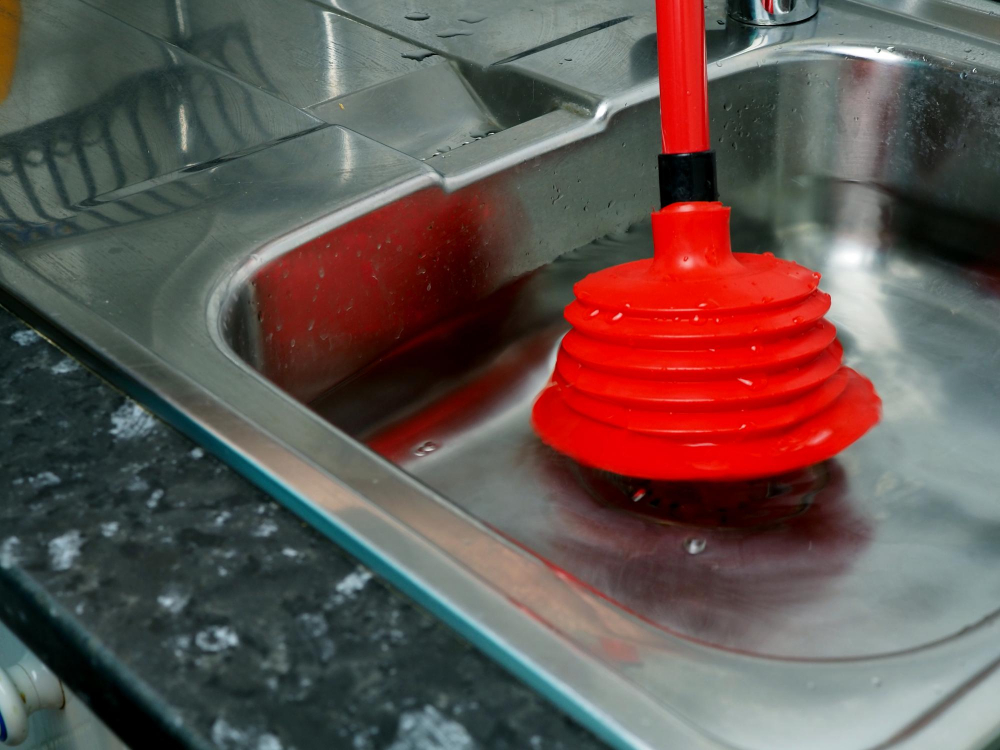
Here’s how to use it:
- Fill the sink or basin with enough water to cover the rubber part of the plunger.
- Place the plunger over the drain and press down firmly until there is no air left in it.
- Begin plunging up and down vigorously for about 20-30 seconds.
- Check if water starts flowing freely through your outside kitchen drain.
If this method doesn’t work, try repeating these steps a few more times before moving on to other methods.
Using a plunger is one of many ways you can unclog an outside kitchen drain without having to call in professional help or spend money on expensive equipment or chemicals that may damage pipes over time.
Using Hands to Unblock the Drain

It’s important to take necessary precautions before attempting this method. First, make sure you’re wearing protective gloves and have thoroughly cleaned the area around the drain.
Next, reach into the drain with your hand and try to remove any visible debris or blockages. Be careful not to push anything further down into the pipe as this could cause more damage.
If you’re unable to feel or remove any blockages with your hand alone, consider using a tool such as pliers or tweezers for better grip.
Remember that using your hands should only be attempted if you are comfortable doing so and have taken all necessary safety measures.
Utilizing Drain Rods to Clear Blockage
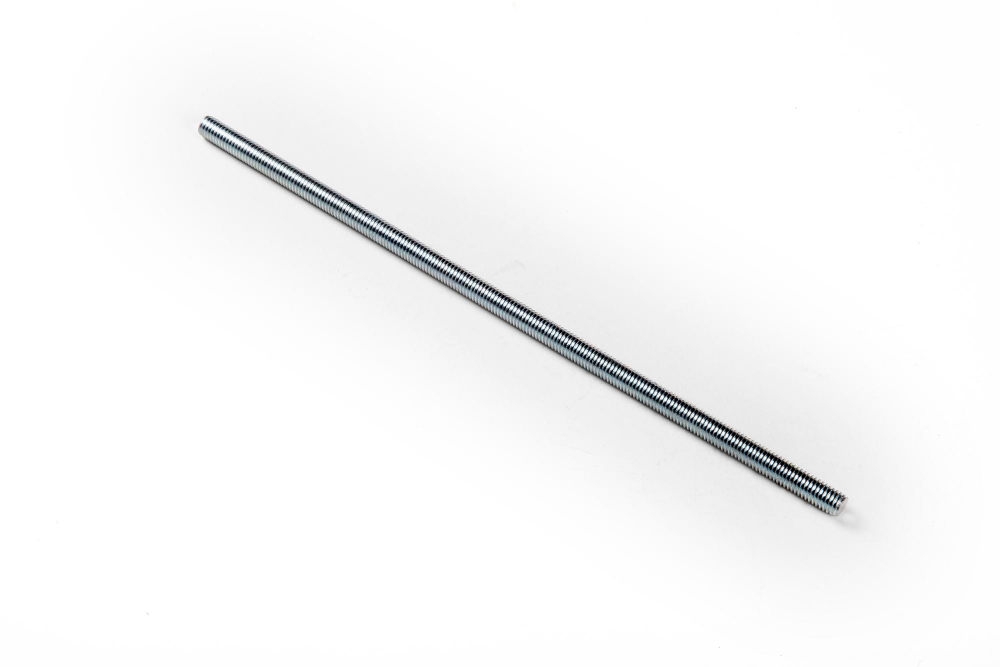
These are long, flexible rods that can be inserted into the drain to dislodge any blockages. Before using them, make sure you have a pair of gloves on and protective eyewear.
To use drain rods effectively:
- Insert one rod at a time into the outside kitchen drain until it reaches the blockage.
- Rotate each rod clockwise while pushing it inwards.
- Keep adding more rods as needed until they reach as far down as possible.
- Once all of your available drainage poles are connected together and inserted fully into your blocked pipe or sewer line turn them counterclockwise so that they will start breaking up whatever is blocking your pipes.
Be careful not to push too hard or force anything through forcefully; this could cause damage to both your plumbing system and yourself. If you’re unsure about how best to use these tools safely, consider hiring a professional plumber who has experience with unblocking drains.
Apply Drain Cleaning Chemicals
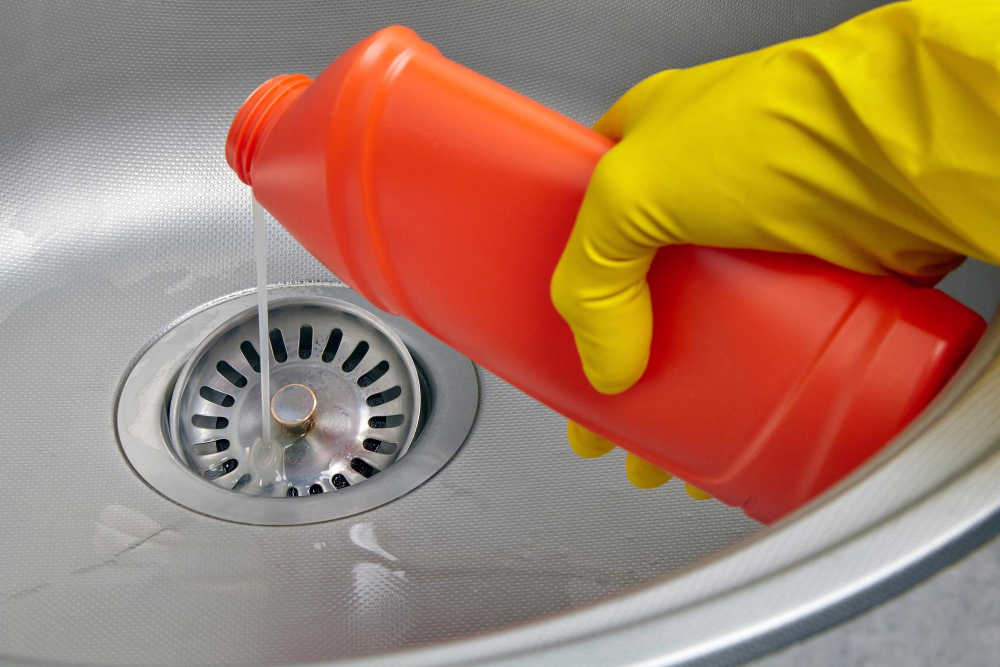
These products are designed to dissolve any organic matter that may be causing the clog. However, it’s important to note that these chemicals can be harmful if not used properly.
To apply a chemical cleaner, carefully pour it down the blocked outside kitchen drain according to package instructions. Be sure not to splash or spill any of it on your skin or clothing as this could cause burns or other injuries.
After pouring in the cleaner, let it sit for at least 30 minutes before flushing with hot water from a hosepipe. This should help break up and flush away any remaining debris in your outside kitchen drain.
It’s worth noting that while chemical cleaners can be effective at unblocking drains quickly, they’re not always suitable for all types of pipes and may cause damage over time if used too frequently.
Baking Soda and Vinegar Method

This method involves pouring half a cup of baking soda down the blocked drain followed by one cup of white vinegar. The mixture will start to fizz, which helps break down any debris or blockages in the pipe.
After about 10-15 minutes, pour boiling water down the drain to flush out any remaining debris. Repeat this process if necessary until your outside kitchen drain is flowing smoothly again.
This method is not only effective but also environmentally friendly as it doesn’t involve harsh chemicals that can damage pipes or harm aquatic life when they enter waterways.
However, keep in mind that this solution may not work for severe blockages caused by solid objects like tree roots or large food particles stuck in pipes. In such cases, it’s best to call a professional plumber who has specialized tools and equipment needed for more complex situations.
Chemical Drain Cleaners: Pros and Cons
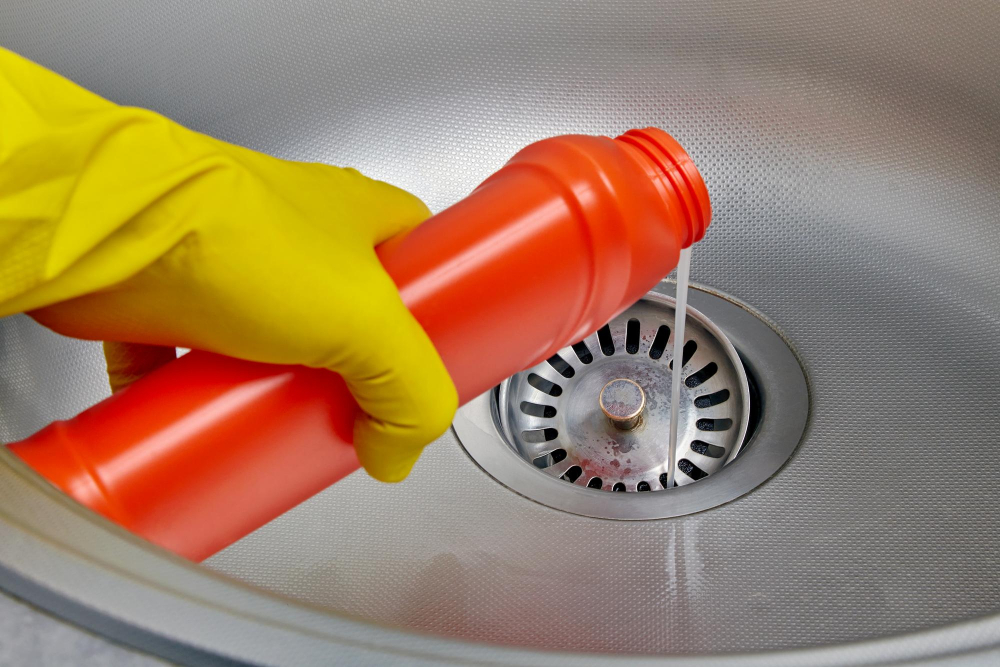
These products are readily available in stores and can be an effective solution for minor blockages. However, they also come with their own set of pros and cons.
Pros:
- Chemical drain cleaners are easy to use.
- They work quickly, usually within 30 minutes.
- They can dissolve hair, grease, soap scum or any other organic matter that may be causing the blockage.
Cons:
- Chemicals can damage pipes over time if used frequently or incorrectly.
- Some chemicals emit fumes that could cause respiratory problems when inhaled.
- If not handled properly, these chemicals could harm your skin or eyes.
It’s important to note that while chemical drain cleaners may seem like a quick fix for blocked drains outside your kitchen; they should only be used as a last resort after all other methods have failed.
Utilize a Plumber’s Snake

A plumber’s snake is a long, flexible metal cable with a corkscrew-like tip that helps break up and remove stubborn debris from your outside kitchen drain.
To use this tool, insert it into the drain until you feel resistance. Then turn it clockwise while pushing forward to help dislodge any blockages in its path.
Once you’ve reached as far as possible or hit an obstruction, pull back on the cable while continuing to rotate it counterclockwise.
Be careful not to force too hard or twist too aggressively when using this tool as it may damage your pipes if used incorrectly.
Applying High-Pressure Water
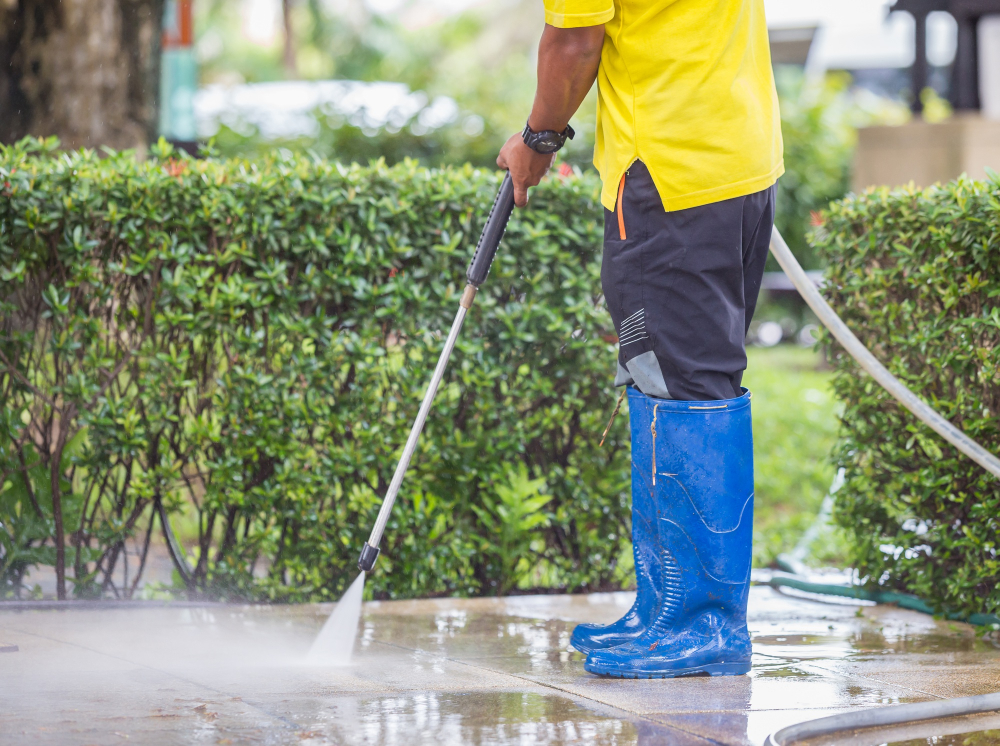
This method involves using a pressure washer or hose with a jet nozzle attachment.
To apply high-pressure water, first, remove any debris from the drain and insert the nozzle of your pressure washer into it. Turn on the machine and direct the stream of water down into the pipe.
The force of this powerful stream should be enough to dislodge most blockages.
However, be careful not to use too much pressure as this can damage older pipes or cause them to burst altogether. It’s also important not to aim directly at joints or bends in pipes as these are often weaker points that could break under too much stress.
Check for Damaged Pipes
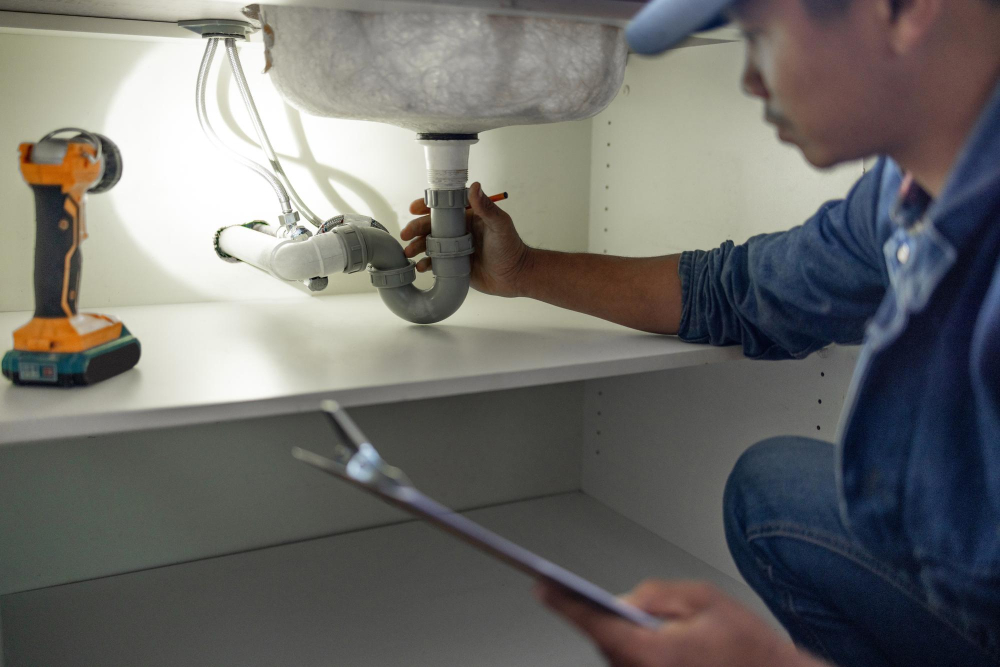
Damaged pipes can cause blockages that are difficult to remove with DIY methods. To check for damaged pipes, you’ll need a plumber’s snake or CCTV camera.
A plumber’s snake is a long flexible wire that can be inserted into the pipe to clear any blockages. If there are no visible signs of damage but the blockage persists, then using a CCTV camera will help identify any underlying issues such as cracks or breaks in the pipe.
If you do find damage in your outside kitchen drainpipe, it’s best not to attempt repairs yourself unless you have experience working with plumbing systems. Instead, call a professional plumber who has specialized tools and expertise needed for repairing broken or cracked drains.
Checking for damaged pipes should be one of your last resorts when trying to unblock an outside kitchen drain since most clogs can easily be removed by following simple steps outlined earlier in this article.
Clean Drain Regularly
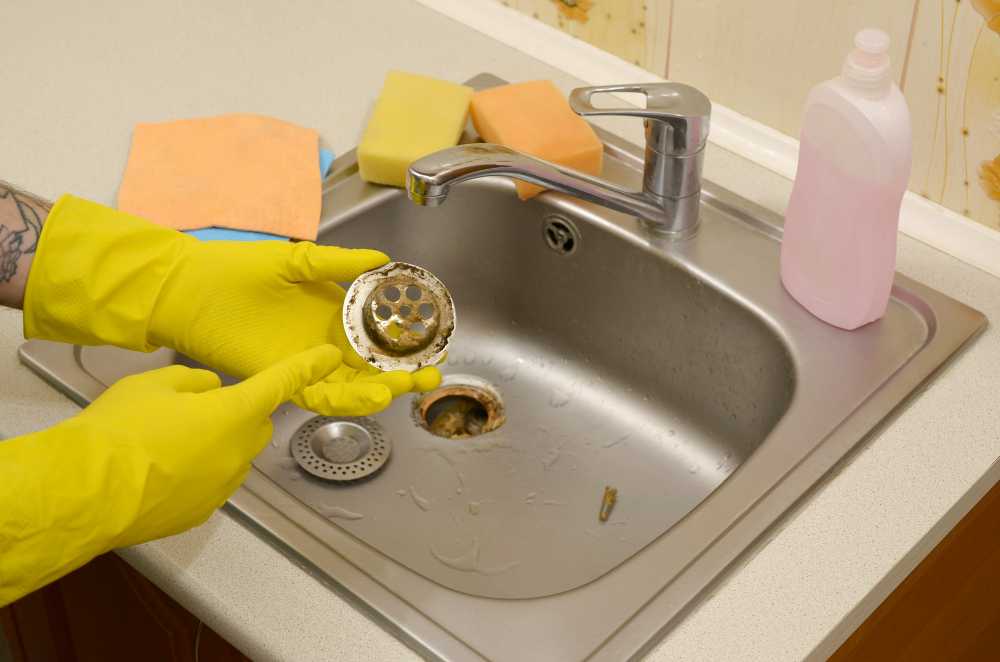
It’s recommended that you clean the drain at least once a month, especially if you use your outdoor kitchen frequently. To clean the drain, remove any debris or food particles that may have accumulated on the surface using a brush or cloth.
Next, pour hot water down the drain to flush out any remaining dirt and grime. You can also add some baking soda followed by vinegar for an extra deep clean.
This will help break down any grease buildup in your pipes.
It’s important to note that harsh chemicals should be avoided when cleaning drains as they can damage pipes over time and harm aquatic life if they end up in nearby bodies of water.
Preventing Future Outside Drain Blockages
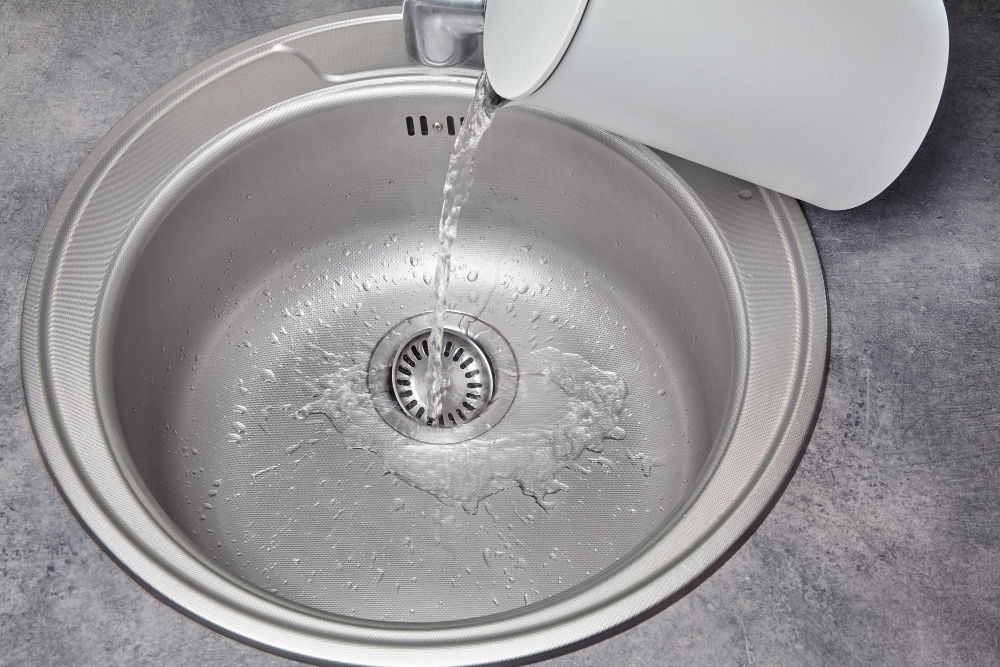
One of the most effective ways is by regularly cleaning your drains. You can do this by pouring boiling water down the drain once a week or using a mixture of baking soda and vinegar.
Another way to prevent blockages is by being mindful of what goes down the drain. Avoid disposing of food scraps, grease, and oil in your sink as they can accumulate over time and cause clogs.
It’s also crucial to keep an eye on any trees or plants growing near your outside drains as their roots may grow into pipes causing damage and blockage.
Maintaining Outside Drains for Longevity
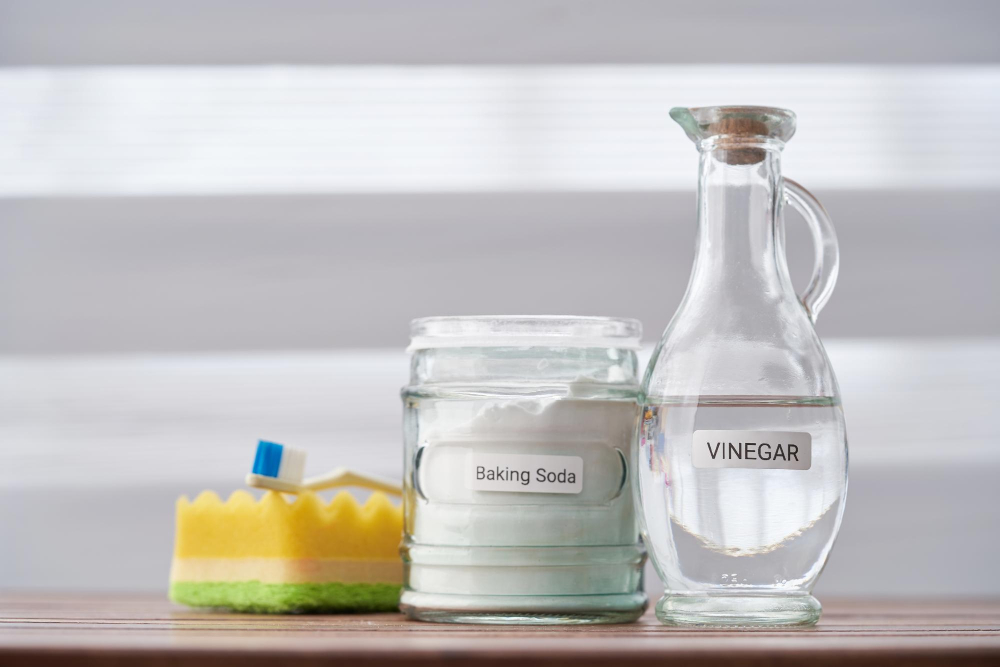
One of the best ways to do this is by cleaning the drain at least once a month. You can use hot water and soap or vinegar and baking soda solution for cleaning.
Another way of maintaining your outside drains is by avoiding pouring grease, oil, or food scraps down the sink as they can accumulate in pipes over time leading to clogs. Instead, dispose of them properly in a bin.
It’s also crucial that you keep an eye on what goes into your drains; avoid flushing non-degradable items such as wipes or sanitary products down toilets as they can cause significant damage not only inside but also outside pipes.
Lastly, inspecting outdoor drainage systems periodically will help identify any potential issues before they become major problems that require costly repairs.
When to Call a Professional Drain Unblocker
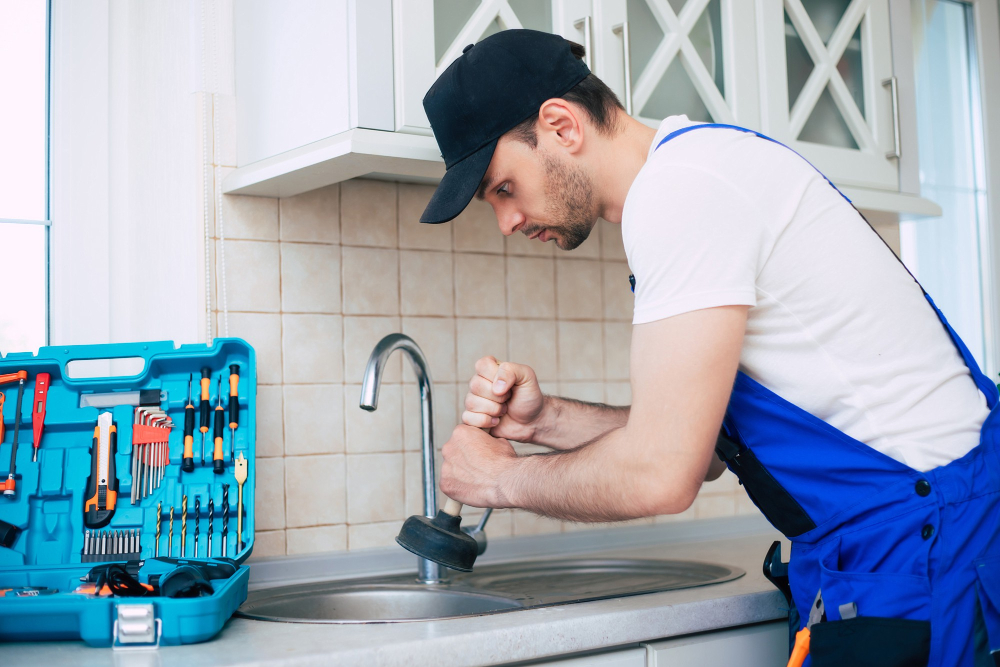
A blocked drain that is left untreated for too long can cause significant damage to your property, leading to costly repairs. Professional plumbers have specialized tools and equipment that allow them to identify the root cause of the blockage quickly.
They also know how best to handle different types of blockages without causing further damage.
If you suspect there may be a more severe issue with your drainage system such as damaged pipes or tree roots growing into them, calling in an expert is essential. Attempting DIY solutions on these problems could lead to even more extensive damages.
While unblocking an outside kitchen drain may seem like a simple task at first glance; it requires careful attention and patience when trying out various methods before resorting for professional help when necessary.
FAQ
Why is there standing water in my outside kitchen drain?
Standing water in your outside kitchen drain is likely due to a clogged or blocked drain caused by accumulated debris such as leaves, soil, dirt, grease, mud, twigs, or other materials.
What happens if outside drain is blocked?
If an outside drain is blocked, water accumulates by the drain, draining slowly or overflowing, and may produce an unpleasant odor.
What is the best outside drain unblocker?
The best outside drain unblocker is caustic soda, also known as sodium hydroxide, which is effective in cleaning and unblocking drains in kitchens, bathrooms, and outside areas.
What are the common causes of outside kitchen drain blockages?
Common causes of outside kitchen drain blockages include grease, food particles, foreign objects, and tree roots.
How can I prevent future blockages in my outdoor kitchen drain?
To prevent future blockages in your outdoor kitchen drain, regularly clean and maintain the drain by removing food particles and debris, and using a drain cleaner if necessary.
What are the potential risks or hazards associated with a blocked outside kitchen drain?
Potential risks or hazards associated with a blocked outside kitchen drain include unpleasant odors, water damage, and increased chances of pest infestations.




